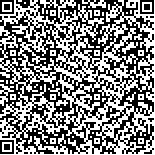| 摘要: |
| [摘要] 目的 分析改良ABCD2评分联合血清腺苷脱氨酶(ADA)和低密度脂蛋白胆固醇(LDL-C)水平检测诊断眩晕病因的效能。方法 选择2019年9月至2022年9月山西省第二人民医院神经内科收治的因眩晕就诊患者259例,其中129例为孤立性眩晕起病的后循环脑梗死(PCS)患者(PCS组),130例为周围性前庭疾病源性眩晕患者(对照组)。患者均接受改良ABCD2评分评估,并检测血清ADA、LDL-C水平等生化指标。采用ROC曲线法分析改良ABCD2评分联合血清ADA、LDL-C水平检测诊断眩晕病因的效能。结果 PCS组年龄大于对照组,合并高血压、糖尿病、高脂血症的人数比例高于对照组,血清ADA、总胆固醇(TC)、LDL-C、空腹血糖(FPG)、白细胞计数水平以及改良ABCD2评分高于对照组,HDL-C水平低于对照组,差异有统计学意义(P<0.05)。多因素logistic回归分析结果显示,较高的改良ABCD2评分、LDL-C、ADA水平,以及合并糖尿病是孤立性眩晕起病PCS发生的独立危险因素(P<0.05)。ROC曲线分析结果显示,改良ABCD2评分、LDL-C、ADA均具有诊断孤立性眩晕起病PCS的应用价值(P<0.05),其中以改良ABCD2评分的诊断效能最佳(AUC=0.936),进一步联合该3个指标进行分析,结果显示三指标联合的诊断效能较单一指标提高(AUC=0.990)。结论 以孤立性眩晕起病的PCS患者改良ABCD2评分和血清ADA、LDL-C水平较周围性前庭疾病源性眩晕患者显著增高,有助于对眩晕病因鉴别。 |
| 关键词: 病因诊断 改良ABCD2评分 腺苷脱氨酶 低密度脂蛋白胆固醇 |
| DOI:10.3969/j.issn.1674-3806.2023.03.11 |
| 分类号:R 741.04 |
| 基金项目: |
|
| Analysis on the efficacy of modified ABCD2 score combined with detections of serum adenosine deaminase and low-density lipoprotein cholesterol levels in etiological diagnosis of vertigo |
|
REN Yun, XING Chao-xia
|
|
Department of Neurology, the Second People′s Hospital of Shanxi Province, Taiyuan 030000, China
|
| Abstract: |
| [Abstract] Objective To analyze the efficacy of modified age, blood pressure, clinical features, duration, and diabetes(ABCD2) score combined with the detections of serum adenosine deaminase(ADA) and low-density lipoprotein cholesterol levels(LDL-C) in etiological diagnosis of vertigo. Methods Two hundred and fifty-nine vertigo patients admitted to the Department of Neurology of the Second People′s Hospital of Shanxi Province from September 2019 to September 2022 were selected, including 129 cases of posterior circulation stroke(PCS) patients with isolated vertigo(the PCS group) and 130 patients with peripheral vestibular vertigo(the control group). All the patients were evaluated by modified ABCD2 score, and the serum levels of ADA, LDL-C and other biochemical indicators were detected. Receiver operating characteristic(ROC) curve method was used to analyze the efficacy of modified ABCD2 score combined with the detections of serum ADA and LDL-C levels in etiological diagnosis of vertigo. Results The patients in the PCS group were older than those in the control group, and the proportion of the patients complicated with hypertension, diabetes and hyperlipidemia in the PCS group was higher than that in the control group, and the levels of serum ADA, total cholesterol(TC), LDL-C, fasting plasma glucose(FPG), white blood cell count and the modified ABCD2 score were higher than those in the control group, and the level of HDL-C in the PCS group was lower than that in the control group, with statistically significant differences between the two groups(P<0.05). The results of ultivariate logistic regression analysis showed that higher modified ABCD2 scores, higher levels of LDL-C, ADA, and concomitant diabetes were the independent risk factors of PCS in the patients with isolated vertigo onset(P<0.05). The results of ROC curve analysis showed that the modified ABCD2 scores, LDL-C and ADA all had the application value in the diagnosis of PCS in the patients with isolated vertigo onset(P<0.05), among which the modified ABCD2 scores had the best diagnostic efficacy[area under the curve(AUC)=0.936]. The combination of the three indicators was performed for further analysis, and the results showed that the diagnostic efficacy of the combination of the three indicators was higher than that of any of the three indicators(AUC=0.990). Conclusion The modified ABCD2 scores and serum ADA and LDL-C levels of the PCS patients with isolated vertigo are significantly higher than those of the patients with peripheral vestibular vertigo, which is helpful to identify the cause of vertigo. |
| Key words: Etiological diagnosis Modified age, blood pressure, clinical features, duration, and diabetes(ABCD2) score Adenosine deaminase(ADA) Low-density lipoprotein cholesterol(LDL-C) |

